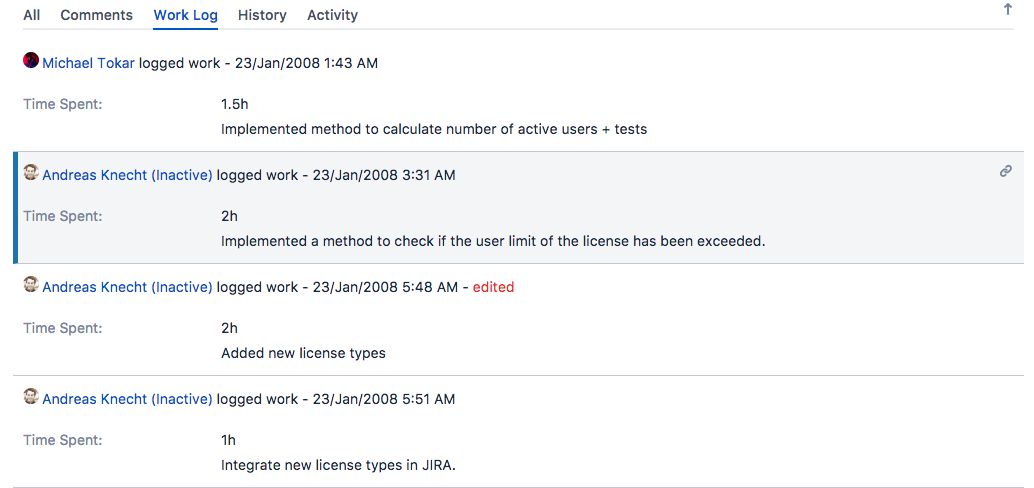Database schema
About the Jira database schema
The following PDFs show the database schemas for different Jira versions:
- Jira_7.9.2_schema.pdf
- Jira_7.0_schema.pdf
- Jira_6.1_schema.pdf
- Jira_5.12_chema.pdf
- Jira_8.13_schema.pdf
- Jira_8.20_schema.pdf
- Jira_9.0_schema.pdf
The database schema is also described in WEB-INF/classes/entitydefs/entitymodel.xml in the Jira web application.
The entitymodel.xml file has an XML definition of all Jira database tables, table columns, and their data types.
Some of the relationships between tables also appear in the file.
Entity Engine and working with the Jira database
Jira uses the Entity Engine module of the OfBiz suite to communicate with the database. Learn more about Entity Engine
If you use Jira API, you will notice that a lot of code deals with GenericValue objects. The GenericValue
is an OfBiz Entity Engine object. Each GenericValue object represents a record in the database.
To get a value of a field from a GenericValue, you will need to use the relevant getter method for the field's type.
For example:
1 2GenericValue project = ... String name = project.getString("name"); Long id = project.getLong("id");
The list of valid fields for each entity can be obtained by looking for the entity's definition in the
WEB-INF/classes/entitydefs/entitymodel.xml file. For the above example, you need to look at the "Project" entity.
Notes about working with the Jira database
Direct database queries are not recommended in Jira. Instead, we recommend adding or modifying data via Jira's REST APIs. Check the Command Line Interface for existing remote scripting tools. If you absolutely must modify data in your database via direct database queries, always back up your data before performing any modification to the database.
For a great way to watch Jira database queries in action, try adding SQL Logging.
Custom fields have their own set of tables. Learn more about storing custom fields in the database
Work logs
Work log entries are kept in the worklog table. For instance, some work logs in Jira
(from JRA-10393) are stored in worklog table in the following way.
id | issueid | author | grouplevel | rolelevel | worklogbody | created | updateauthor | updated | timeworked | startdate |
|---|---|---|---|---|---|---|---|---|---|---|
83332 | 38315 | mtokar |
|
| Implemented method to calculate number of active users + tests | 2008-01-22 19:44:04.867-06 | mtokar | 2008-01-22 19:44:04.867-06 | 5400 | 2008-01-22 19:43:00-06 |
83333 | 38315 |
|
| Implemented a method to check if the user limit of the license has been exceeded. | 2008-01-22 21:33:18.23-06 | 2008-01-22 21:33:18.23-06 | 7200 | 2008-01-22 21:31:00-06 | ||
83334 | 38315 |
|
| Added new license types | 2008-01-22 23:49:27.794-06 | 2008-01-22 23:51:06.029-06 | 7200 | 2008-01-22 23:48:00-06 | ||
| 83335 | 38315 | andreask@atlassian.com | Integrate new license types in JIRA. | 2008-01-22 23:51:23.799-06 | andreask@atlassian.com | 200 |

Where:
issueidmaps tojiraissue.idtimeworkedis in seconds
Whenever a worklog entry is added, the jiraissue.timespent and jiraissue.timeestimate values are incremented
and decremented respectively.
Related topics
Some of the relationships between Jira's tables in the database are documented in the following sections:
Rate this page: